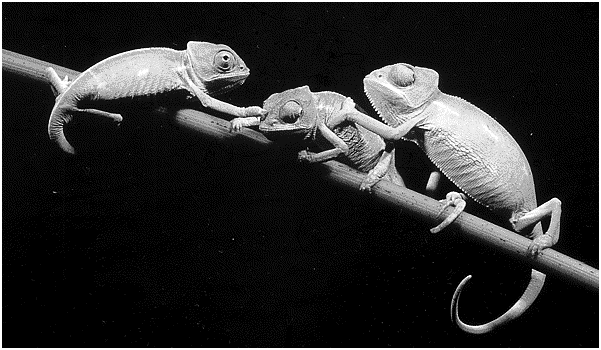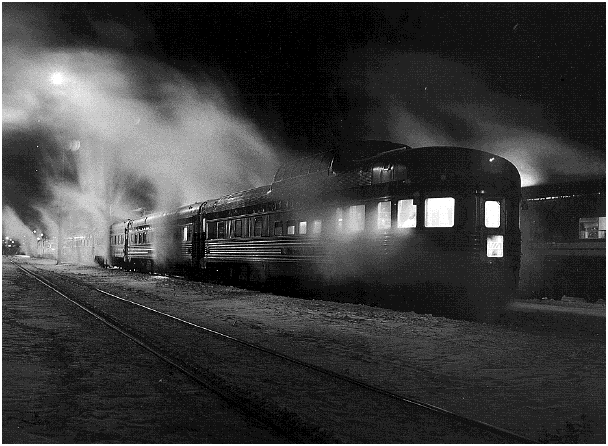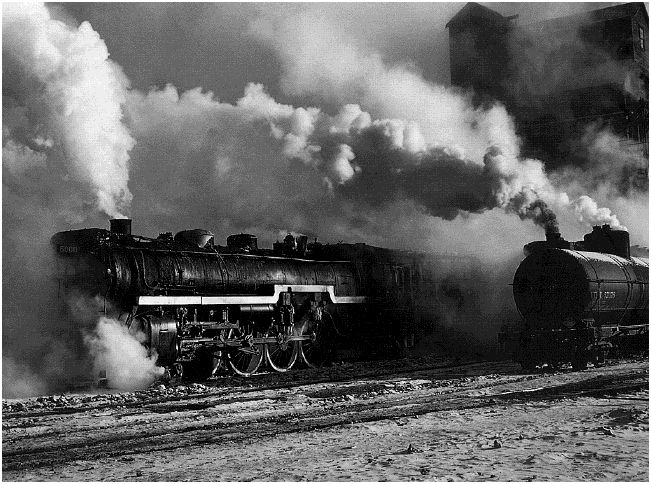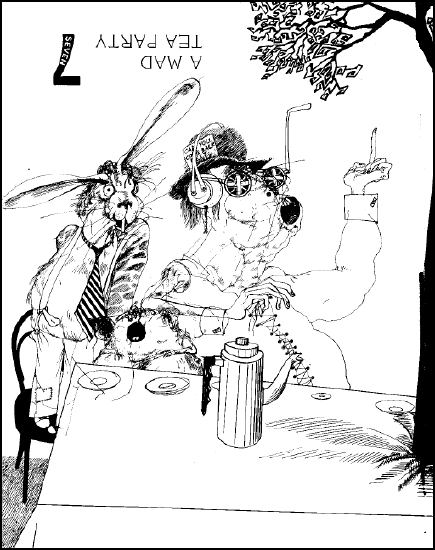
LizardsA Natural History of
Some Uncommon Creatures
Extraordinary Chameleons
Iguanas, Geckos, and More
David Badger, Text
John Netherton, Photos
(Voyager Press)

First of all, I don't believe that a man named Badger is writing a book about lizards. Second, if it is a Badger, and if he is telling the truth, he just stole part of my youth from me.I grew up in Florida, and I find on page 98 that the "chameleons" that we used to torture and which used to be all over our house or climbing up the brick outhouse but weren't chameleons at all, rather Anolis carolinensis --- better known as "Anoles." Sounds somewhat vulgar. Especially around the outhouse.
I also find out Anoles don't change color depending on what they are sitting (or standing) on. "Rather," says the author, "it is such factors as light, temperature, mood, excitement level, and physical activity." If you are an anole in a bad mood, you turn brown; if you are lusty, you turn green. Envious? Turn blue.
Thus Truman Capote might have been putting us on when he wrote that they were very fond of Mozart sonatas:
Eventually the chameleons accumulated, a dozen, a dozen more, most of them green ... They skittered across the terrace and scampered into the salon, a sensitive, absorbed audience for the music.
And when it was over: "The chameleons scattered like sparks from an exploding star." Except, now, of course, we know they were something else again.
§ § § This book has over 100 lovely pictures of our friends of the trees and walls and forests and rocks. There's the marine iguana that looks like your grandpop, the fire skink that appears to be dangerous but isn't (the only lizards that are dangerous are the Komodo Dragon of Indonesia "that has been known to attack and kill people" and the Gila Monster).
There's the Senegal Chameleon with those funny eyes that go every which away [See Fig. 1]. Then there is my buddy, the golden gecko which lives on the wall of my bedroom to the far south and makes a noise that one famous writer called kissing. He also thought it was a bird, called it "the kissy-kissy bird." Turns out it's not far from the truth --- this puckering sound is a gecko mating call, a call only geckos could love. Smack-smack.
Geckos are the only lizards with vocal cords, Badger tells us, and the word "gecko" is the sound the Tokay gecko makes, reported to be "a loud barking." Some drunks --- possibly drunk on Tokay --- reported that geckos hanging out (literally: on the ceiling) of a Malaysian billiard room produced "clicking sounds" not unlike that of the billiard balls. We don't know if they took up the game, beating the regulars by wrapping their tails around the cue stick. Someone was probably barking, or barfing.
--- Lem WattersThe Mountains
Know ArizonaImages of the Land and
Stories of Its People
Rose Houk, Text
Michael Collier, Photographs
(Arizona Highways)Ten of Arizona's mountains are featured here, including the Four Peaks (the mountains that appear on the state license plates), the White, the Kofa, the Santa Catalina, and the San Francisco Peaks. There are over two hundred photographs, exquisitely printed, all in color, showing a surprising variety of scenery.For those of us who bother to think of Arizona at all, we think of Phoenix and the traffic and Tucson and the sirocco and Barry Goldwater and thieving governors and saguaros, cholla, paloverde. It is passing strange to find rich mountain streams, lush valleys, aspens, cottonwood, oak, poppies.
This is a very roseate picture of Arizona, but you might note --- in a few of these pictures --- that dark brown stuff in the sky (few sky shots in the mountains closest to Phoenix). And anytime you get caught in a pestiferous traffic jam nightmare in Phoenix, Tucson, Tempe, or Flagstaff, know that Arizona Highways Magazine was there many years ago drumming up a few more freeways.
Which I guess is typical PR: lush colorful pictures of glaciers and wildlife and gorgeous lakes turn up regularly in the Atlantic, the New Yorker, Harper's, all sponsored by Exxon and DuPont and Dow and Union Carbide --- those full-page spreads complete with a few dreamy words on how much they care.
So take it with a grain of salt but take it: The Mountains Know Arizona is slightly lubricious but definitely luscious.
--- J. L. RenfrewPassing
TrainsThe Changing Face of
Canadian Railroading
Greg McDonnell
(Boston Mills)

Do you remember so long ago you'd be on the train and you heard the grinding of the brakes and you'd wake up because all was still and you would lift up the shade next to your hole-in-the-wall bed and there just feet from you would be this out-of-nowhere depot with a few yellow light bulbs hanging down with their little black hats swinging in the wind over the snow- tracked platform and there would be nothing or no one only an empty baggage wagon with its own load of snow pulled up against the dark wall of the station the frost edging the crusty windows the door closed against the night and you lying there in your bed with the fresh white clean crisp sheets and out there in the thin light the cold and desolation of some godforsaken town in Montana or North Carolina or Saskatchewan (Big Horn, Rocky Mount, Portage la Prairie) and you all alone with your vision thanking god that you are in and all that out there is out knowing that in a few moment's time if there is no glacier from god descending over this great long jointed train (and you) because you know you'll be gone from this isolated freeze-dry bone of the night-place in just a few moments, a place you hope you will never have to experience you safe and warm in your traveling capsule so safe from the wind blowing (blowing so hard the car rocks)...
...and then suddenly can you hear now the first pull of the engines catching up the cars and the whistle from so far up there to let you know that you are saved yet again not having to live in the ice-night of Spartenburg, Hardin, Medicine Hat, as now you are leaving it behind to its own icy fate as the lights pass one behind one behind now one now going faster one and then suddenly there at the very end of the platform a figure bulked earflaps and hat heavy coat comically this huge gloved bulked being against the last pangs of North Battleford, Livingston, Hickory now going by so quickly in his hand the lantern the three-ringed windows of green and red and yellow he now alone gone there left behind in a last frieze of air's breadth swirling the loose snow around now gone left behind there in Mount Airy, North Carolina, Bozeman, Montana, Swift Current, Saskatchewan.

--- W. W. Emerson, III
Alice in
WonderlandLewis Carroll
Ralph Steadman,
Illustrator
(Firefly)

"Have some wine," the March Hare said in an encouraging tone.
Alice looked all round the table, but there was nothing on it but tea. "I don't see any wine," she remarked.
"There isn't any," said the March Hare.
"Then if wasn't very civil of you to offer it," said Alice angrily.
"It wasn't very civil of you to sit down without being invited," said the March Hare.
"I didn't know it was your table," said Alice: "it's laid for a great many more than three."
"Your hair wants cutting," said the Hatter. He had been looking at Alice for some time with great curiosity, and this was his first speech.
"You should learn not to make personal remarks," Alice said with some severity: "It's very rude."
The Hatter opened his eyes very wide on hearing this; but all he said was "Why is a raven like a writing-desk?"
Many of us were raised on Alice in Wonderland with the drawings of Sir John Tenniel, the very artwork that appeared in the original 1865 edition. Alice looked suitably Victorian, the March Hare looked to be your usual busy-body rabbit (complete with vest and watch). The Queen was large-mouthed and wild-eyed and, in her own way, appeared to be quite mad, and the Mad Hatter even madder (with the note "In this Style 10/6" stuffed in his hat band).
Tenniel's drawings will forever be engraved in what's left of our juvenile minds, so it is discombobulating to run across illustrations in this new edition by shock-artist Ralph Steadman, best known for his wild journeys to Las Vegas with Hunter S. Thompson.
And I am not so sure that his new vision works. Steadman's lines are best described as acidic in both senses of the word, and there's is an undertone of brutishness that doesn't necessarily jibe with the gentle irony of the Alice we remember.
There are hints of Tenniel here: Alice is still in her puff-shouldered girl's dress, the Hatter has a sign stuck in his fedora "Can You Come Back Next Week," and the photograph of Steadman on the back flap shows a top hat inscribed "This Style 10 Euros."
But to see the Hatter with earphones, the Hare looking stoned, the gardeners in the Croquet Ground with little beady eyes and wrinkled angry mouths doesn't parse. You might say "it's the same thing, you know..." to which I will have to reply, "You might as well say that 'I like what I get' is the same thing as 'I get what I like'!"
--- Lolita LarkThe Desert Cries
A Season of
Flash Floods
In a Dry Land
Craig Childs
(Arizona Highways)In our review of The Secret Knowledge of Water, we wrote that Craig Childs' specialty is water --- water where you and I would expect none: in the middle of the high desert country of the American west.
One of his tasks is to map water holes, but in his descriptions of his various journeys through the Sonoran desert, and up into the Grand Canyon, and over into Utah he is less that of a scientist, more of a poet. The words he strings together are so lyrical that I found myself comparing him to another naturalist --- that naturalist of the air --- Antoine de Saint-Exupéry. The two of them have the ability to take what would be monotony to the rest of us --- and turn it into music:
"This give and take is never subtle," he writes. "Water in flood means exactly what it says. It has no hypocrisy. Even as it murders, it leaves life behind and carves elegant, intricate passages into raw stone, all the while having no debate about its intention. It is the same water that will sit complacently in a hole for months or years, the same arrangement of atoms that flows gently, singing lullabies, the same that fiercely consumes children and tears the walls from the titanic canyons."
Childs' newest book, The Desert Cries, runs only 150 pages or so, but it is composed with no small artistry. It tells of five flash floods that killed 22 people on the Arizona deserts in August and September of 1998. The focus is on how these floods come so ravenously, so unexpectedly, snuffing out human life in seconds.
He tells of the train the Southwestern Chief, derailed after a bridge over a dry gulch is weakened. He writes of undocumented workers drowning in a storm sewer in Douglas, Arizona. He describes tourists ambling through a slot canyon in northwest Arizona, the Antelope Canyon.
In the desert, the two primary elements are stone and water. Stone comes in abundance, exposed by weathering and a lack of vegetation. It is a canvas. Water crosses this stone with such rarity and ferocity that it tells all of its secrets in the shapes left behind. Antelope Canyon's interior is the pure expression of both ... None of us have been in here before. We use trite adjectives when we talk. "Astounding," "beautiful," "unbelievable." They are the only words we can find. It is a caricature of a canyon, each feature swollen to grandiose proportions.
On August 12, tourists come to the canyon. They don't know to look to the thunderclouds off in the distance, in the mountains, which can be the precursor of just such a flood. When the water appears, they are surprised. One moment, they are climbing through a dry creek bed, admiring the patterns on the walls, the next, they look up, and there is another wall:
A blunt mass of dark water surges into view. It splits around the ladders above them. Streams of water and foam cut through the metal steps into the air. Tangled inside this water is the Frenchman, struggling to breathe, to get out. His face spears through the water, screaming. Bowled over, he tries to keep his ground. He can't. The vision is terrifying.
Childs has a fine sense of the English language and a fine sense of the desert. The Desert Cries is naturalist writing at its best.
--- F. C. Goddard